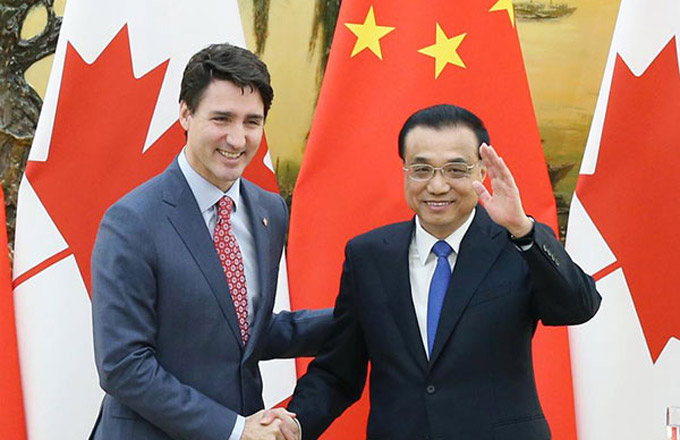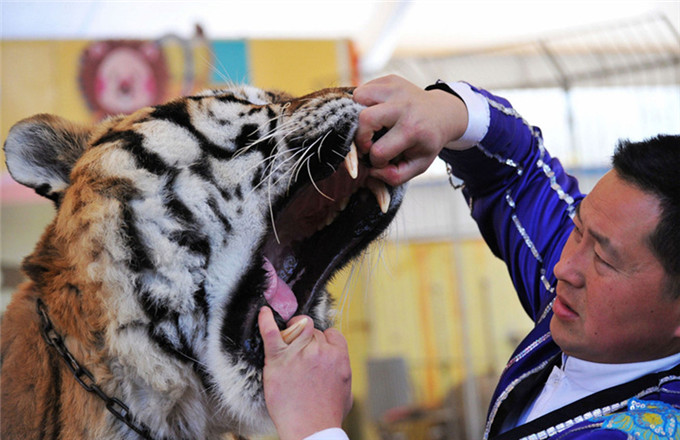Live-hog imports help meet demand
China, the third-biggest importer of pork products from the United States, has also become a top market for US breeder hogs, whose genetic advantages boost productivity on Chinese farms.
Through November, China was the top destination for exports of live US hogs in 2012 in terms of value - $16.28 million for 12,138 animals, said Joe Schuele, a spokesman for the US Meat Export Federation, an industry trade group.
For China, the US was the biggest supplier of live-hogs last year, with much smaller imports from Canada, France and Britain. For US hog breeders, other major export markets were Mexico, Canada and Russia.
China, where pork is a dietary staple, is importing US breeder hogs to help meet the protein demands of its growing middle-class population. US breeders are facing declining consumption and rising production costs at home. But some industry observers have suggested that American pork processors could be hurt in the long run if Chinese breeders increase output enough so that imports are no longer needed.
Schuele said most in the industry don't see it that way. China already produces five times more pork annually than the US, he said, yet can't keep up with demand. In other words, the market is big enough for a healthy domestic pork industry and imports.
"In many international markets for US pork, the goal is not to displace domestic suppliers but rather to supplement the domestic pork supply with cuts of US pork that are in high demand," the exporters' representative said. "It's simply another sector of US agriculture that is playing an important role in meeting the growing global need for high-quality protein."
Debao Group, a major hog breeder in Liaoning, northeastern China, imported 1,058 hogs in December from Newsham Choice Genetics, an Iowa company that breeds swine using genetics technology it develops.
"This is the first time we've exported hogs to China," said Jim Schirmer, director of global business development for Newsham, pointing out that importation of the company's genetically modified hogs was approved by Chinese agricultural regulators.
"Generally, Chinese companies prefer more-efficient animals for feed conversion, faster-growing market animals and maternal products that are able to have more hogs and wean more hogs," he said.
"We value China the highest; the deal we made last month was a significant event because China is our priority for global business," Schirmer said, adding that Newsham expects to do more deals with Chinese customers this year.
Last year, 905 US breeder swine, a broad category that can include mature domesticated hogs and younger pigs, were shipped by air to a new farm in Kaiping, in southern China's Pearl River Delta region.
Guang Sanbao, a leading producer of breeder hogs, bought the US animals. Since 1984, the company has imported a total 5,800 hogs from the US and Canada, according to its website.
Chinese companies imported more than 10,000 breeding hogs in 2012, about the same amount as 2011. Each year, 60 to 70 percent of those imports were from the US, said to Wang Xiaoyue, an analyst with Beijing Orient Agribusiness Consultant Co.
Canada and Britain were the other top exporters of breeder hogs to China, Wang said. Each animal cost between $2,100 and $2,200 in 2012.
US hogs are highly sought because they grow faster and have a higher proportion of lean meat than their Chinese equivalent.
Besides live hogs, China is also importing industry-specific technology.
In 2012, Tangrenshen Co, an integrated pork and animal-feed company in Hunan province, announced a joint venture to build a research-and-development farm in northeastern Indiana with local partner Whiteshire Hamroc LLC, a swine-genetics company.
Since that agreement, at least six managers from the Chinese company have been trained by Whiteshire Hamroc, company president Mike Lemmon said.
"We train them to operate the farms according to our standard operating procedures developed in the US and as they apply to Chinese situations, as well as providing them technology to use as test-requirement specifications determine."
Lemmon was asked about the possibility that, in keeping with established practices in many of its industries, China will apply its imported technologies to produce cheaper hogs, eventually becoming an aggressive competitor globally. He pointed out that farm commodities are traded worldwide and that lowest-cost producers tend to dominate markets. "But it is up to each country's government actions to control where the product is allowed to move," he said, "and whether production and cost advantages by various countries or regions will be realized by consumers in different parts of the world where costs may be higher or production more of a challenge."


















